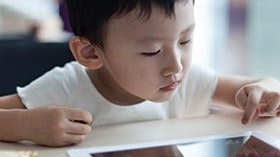Homepage
•
Learning Library
•
Blog
•
How today's tech is impacting the earliest learners
Expand breadcrumbs
Expand breadcrumbs
- Learning Library
- Blog
- How today's tech is impacting the earliest learners
- Homepage
- •
- Learning Library
- •
- Blog
- •
- How today's tech is impacting the earliest learners
How today's tech is impacting the earliest learners
By Sue Marquette Poremba
April 1, 2015








